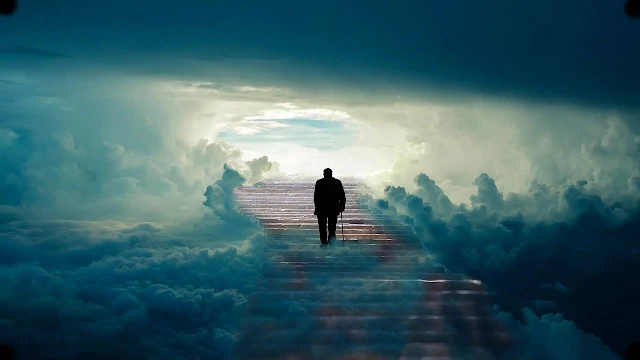
The concept of the afterlife has fascinated humanity for centuries.
Across cultures, religions, and belief systems, the idea that some aspect of an individual continues to exist after physiological death remains a common thread.
Let's delve into this intriguing topic and explore the various perspectives on what lies beyond our earthly existence.
{tocify} $title={Table of Contents}
Defining the Afterlife
The afterlife refers to continued existence in some form after death.
While interpretations vary, the belief that an individual's soul or consciousness persists beyond physical demise is widespread.
This concept transcends geographical boundaries and is shared by the great majority of the world's religions.
Perspectives from Different Traditions
- Ancient Egyptian Beliefs: In ancient Egypt, the afterlife played a central role. The deceased underwent a complex journey through various realms, including judgment before Osiris, the god of the dead. The heart was weighed against a feather to determine one's fate.
- Christianity: Christian teachings emphasize eternal life or eternal damnation based on faith and deeds during earthly existence. Heaven represents blissful communion with God, while Hell signifies punishment for sin.
- Islam: Islamic tradition describes a Day of Judgment when all souls will be resurrected and held accountable for their actions. Paradise (Jannah) awaits those who lived righteously, while Hell (Jahannam) awaits wrongdoers.
- Hinduism: Hinduism envisions reincarnation—a cycle of birth, death, and rebirth—guided by karma (actions). Liberation (moksha) frees the soul from this cycle, leading to union with Brahman.
- Buddhism: Buddhists believe in rebirth but seek to break free from samsara (the cycle of suffering). Enlightenment (nirvana) liberates the soul from rebirth.
- Native American Traditions: Many indigenous cultures believe in an afterlife connected to nature and ancestors. Spirits continue their journey beyond death.
Scientific Perspectives
While science primarily focuses on empirical evidence, some intriguing findings hint at an afterlife:
- Near-Death Experiences (NDEs): Individuals who have faced clinical death often report vivid experiences—such as tunnels of light, encounters with deceased loved ones, or life reviews—that challenge conventional materialist views.
- Out-of-Body Experiences (OBEs): Some people claim to leave their bodies during critical situations, observing events from an external perspective. These accounts raise questions about consciousness beyond physical confines.
- Grey Zone Between Life and Death: Researchers suggest that millions may inhabit a "grey zone" between living and dying during NDEs or OBEs. Profound changes occur in these individuals, reducing fear of death and inspiring positive transformations.
Near-Death Experiences and Insights
For many, the question of what happens after we die remains mysterious.
However, some individuals who have undergone near-death experiences (NDEs) report vivid encounters with an afterlife.
These experiences provide glimpses into a realm beyond our physical existence.
One such survivor is Anita Moorjani, a public speaker who battled lymphoma.
In 2006, she slipped into a coma due to her deteriorating health.
During this time, Moorjani believes she crossed over into the afterlife.
She described feeling as though she was above her physical body, with a 360-degree peripheral vision extending beyond the room where her body lay.
In this state, she was reunited with her late father, who advised her to turn back.
Despite the beauty and freedom, she felt in that realm—free from pain, discomfort, and fear—she chose to return to her body because she believed it would heal rapidly.
Astonishingly, within four days, her tumors had shrunk by 70 percent.
Annabel Beam, diagnosed with a chronic digestive disorder at age 4, also experienced a crossing-over moment during a near-death episode.
Her father described her as sweet and gracious even amidst intense pain and frequent hospital visits.
Religious Perspectives
Religious beliefs about the afterlife significantly influence how people perceive life on Earth and their behavior.
A study conducted by Arizona State University and the University of Wyoming found that religious convictions regarding the afterlife predict individuals' values and practices related to sustainability.
What people believe happens after death shapes their environmental consciousness, affecting choices such as recycling or purchasing energy-efficient appliances.
The Sealed Room Analogy
In his book "Why an Afterlife Obviously Exists," Swedish philosopher Jens Amberts likens life after death to a tightly sealed room.
Although we cannot directly observe this room ourselves, Amberts argues that we have numerous reliable witnesses—those who have explored it through NDEs or other means—and they overwhelmingly agree that consciousness survives beyond physical demise.
In summary, while the question of what awaits us after death remains mysterious for many, NDEs and religious beliefs offer glimpses into an afterlife—a realm where pain dissipates, fear vanishes, and love envelops us.

Post a Comment